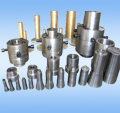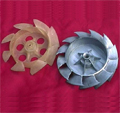

| Address: | PDS Enterprise Inc. 1650 West Artesia Blvd, Suite 278 Gardena, CA90248 |
| Phone: | 1-843-408-0142 |
| Email: | pdsenterprise@gmail.com sales@coolprototyping.com |


Home>FAQ
208. Design Approaches
There are two basic approaches to design, formative and summative. The formative approach is where the prototype is built, based on the current stage of the design, then tested on users, and the results are fed into the next stage of development to enhance the usefulness of the design. The summative approach takes a different route, where one single exercise is performed at the end of the iterative design enhancing process. At this stage it is usually too costly to make changes. The summative approach is obviously less time consuming and more cost effective initially but in the long run it is definitely more beneficial for a software design team to go with the formative approach. If the system is tested as a whole once in the end it is hard to pin point various different problems that may exist within the design. Thus it is important to test the system in sections as it is developed as well as in the end.
There are four different methods to formative evaluation which are:
1. Learning from designing and building prototypes.
2. Running informal user tests on the initial prototype.
3. Conducting a series of field tests.
4. Testing a component of the design under controlled conditions.
In the first method, learning from industrial design and building prototypes, working prototypes of the user interface are built initially so that designer can discover problems early on. This method usually lasts the entire duration of the design process all the way till the implementation of the final product. The second, running informal user tests on the initial prototype, usually consists of testing the first working prototype on the designers themselves as well as others people who are willing to try it out. This method is very effective in exposing unexpected design flaws. The duration of each iteration of the prototype usually takes anywhere from a few days to a few weeks. The third method, conducting a series of field tests, is based on progressive enhancements of the same prototype. Rather than build a new prototype each time, the initial one is just readjusted until it is 'perfect'. This design is implemented initially in the field and critiqued extensively by the various members of the user population. This whole process takes month's or even years, but the individual periods of evaluation take about three weeks. The final method, testing a component of the design under controlled conditions, is normally done in a controlled usability lab and can provide more accurate results than the other methods because every attribute of the experiment is monitored intensely . This process usually takes several weeks, sometimes months.
 We are constantly looking for new products in order to grow our business and Invention Home has enabled us to streamline that process much more quickly.
We are constantly looking for new products in order to grow our business and Invention Home has enabled us to streamline that process much more quickly. Marsha Dunmyre
CA, U.S.A
Cool Prototyping Copyright 2008-2009 © All Rights Reserved. Rapid Prototyping






